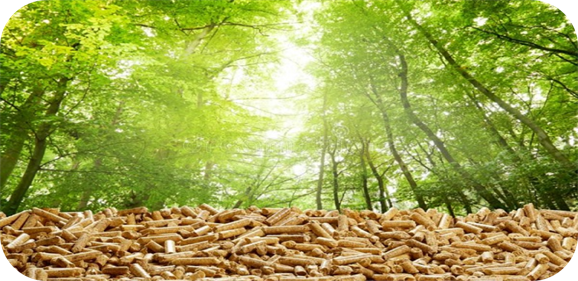Biomass Co-firing (up to 20%), MSW and Sludge Co-firing
Biomass co-firing has a significant potential to decarbonize existing thermal plants. Additionally, biomass co-firing can also mitigate air pollution caused by direct burning of stubble in the fields by the farmers.

Rationale
NTPC is taking various steps for decarbonizing its coal power plants for achieving the Net Zero Emission Targets. As a part of its decarbonization initiatives, biomass co-firing in existing and new NTPC coal power plants are being explored by NTPC. Each percent biomass of cofiring has the potential to reduce CO2 emissions by approximately the same percentage. Additionally, biomass co-firing also mitigates air pollution caused by direct burning of stubble in the fields by the farmers.
Brief About the Works being carried out
NTPC has achieved a new milestone by successfully and safely demonstrating co-firing of 20 wt.% torrefied biomass in Unit#4 Stage-I of NTPC Tanda Plant on 30.03.2024. The initiative is first of its kind in Indian power sector which may go a long way in decarbonizing existing coal fired fleet and achieving the Net Zero Emission targets.
NTPC has already achieved sustainable biomass co-firing of 7 to 10 wt.% with non-torrefied pellets made of agricultural residue without any modifications in the existing system, an initiative started in year 2017. However, for firing higher percentage of non-torrefied biomass significant modifications in boiler, mills etc. are required. Accordingly, for co-firing higher percentages of biomass without any major modifications in the existing system, possibility of using torrefied biomass was explored by Energy Transition and Policy Research Division of NTPC Engineering. For production of torrefied biomass pellets, biomass is heated in absence of oxygen to convert it in a coal like material. The torrefied biomass has low volatile content, higher Hargrove grindability index (HGI) which makes it suitable for use with existing system for higher cofiring percentages also. The Gross Calorific Value (GCV) and present cost of torrefied biomass pellet is equivalent to that of imported coal. However, there is significant potential for cost reduction in longer run with maturity of technology and market.
NTPC has also carried out torrefied waste sludge and torrefied MSW firing in existing coal-fired power plants. This innovative solution can help in utilization of the waste sludge produced from the STP plants, reduce the net CO2 emission from the power plant and further helps in reducing land and water pollution. Torrefied waste sludge firing in existing coal power plants can be a useful solution for utilization of STP sludge waste in the country and conversion to energy in an environmentally friendly way.

